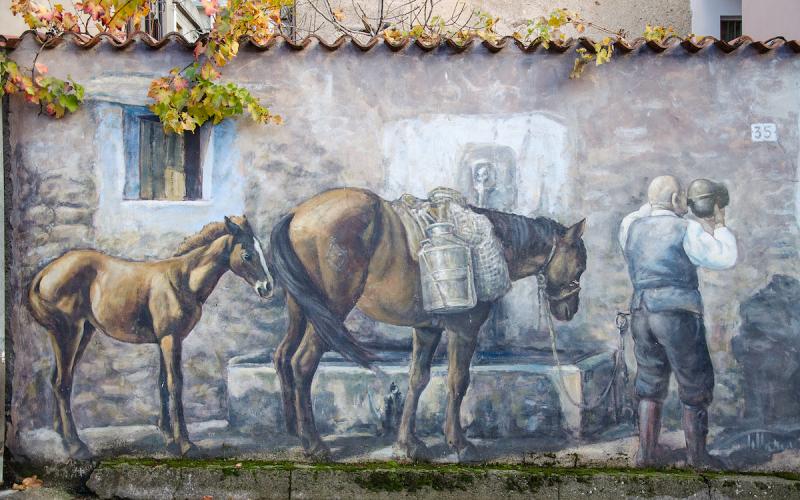Unusual Places in Italy: Orgosolo (Sardinia)
ITA:

Use player to listen to Italian version

Paywall Content
Approximately 150 murals adorn the streets and walls of Orgosolo, a town in the often ignored heart of Sardinia, the Italian island where tourists flock to enjoy its beautiful beaches.
The murals not only depict local customs and traditions, but often also carry political messages. Some depict women wearing traditional clothes, shepherds who lead their animals to pasture, women intent on washing clothes or collecting water, men on horseback, daily life and pastoral traditions; others refer to politics, dissent, malaise and social justice, and depict both local and international events.
The first mural in Orgosolo appeared in 1969, created by Dionysus, the collective name for a group of anarchists. In 1975, to honor the Resistance and the Liberation of Italy from Nazi-Fascism, a Sienese teacher and his middle school pupils created new murals; this led to local artists adding their contributions to adorn the streets, squares and houses of Orgosolo, most of Dadaist and Cubist inspiration.
Nowadays, not only local, but also foreign artists create murals, thus you can see the Twin Towers on fire, the lament of Native Americans who have lost their lands and identity, the military mission in Ethiopia, the sky from which it no longer rains, and more. There are also numerous tributes to 20th century figures and intellectuals, with famous quotes such as, “Unhappy the land that is in need of heroes,” by Brecht.
Sardinian muralists use water-based paints, which are extremely perishable; the works are repainted only if the community feels the need to, otherwise they are destined to disappear, left to memory of those who have seen them.
The murals of Orgoloso would not be possible without the tacit consent of its 4,500 inhabitants, therefore they should be considered a form of collective art.
Circa 150 murales adornano le strade e i muri di Orgosolo, cittadina nel cuore spesso ignorato della Sardegna, l'isola italiana dove i turisti accorrono per godersi le sue bellissime spiagge.
I murales non solo raffigurano costumi e tradizioni locali, ma spesso portano anche messaggi politici. Alcuni raffigurano donne in abiti tradizionali, pastori che conducono i loro animali al pascolo, donne intente a lavare i panni o a raccogliere acqua, uomini a cavallo, vita quotidiana e tradi











